DPF 101
Vehicle owners of medium and heavy-duty trucks with diesel engines are spending thousands of dollars replacing Diesel Particulates Filters and getting their trucks serviced at truck dealerships when their trucks break down or are forced into limp-mode from a diesel emissions failure.
This causes financial stress, not just because of the repair costs, but unscheduled downtime caused by after-treatment failures often creates an avalanche of additional expenses from tow bills and meals and hotels for the driver to loss of revenue and penalties for not delivering freight on time.
While most vehicle owners want to do their part to reduce harmful emissions coming from their diesel engines, the diesel emissions systems on trucks today have been mandated by the government and all the costs of that mandate has been passed on to the vehicle owner which is hurting the entire trucking industry and that isn’t fair.
Understanding DPFs and how they work with vehicles is related to many factors, all of which we will discuss. Welcome to DPF 101. Let's dive in.
How to Save Money on Diesel Emissions System Repairs
We’ve helped tens of thousands of vehicle owners solve diesel emissions problems since 2006 and we’ve developed a 3-step plan that will help you reduce your repair costs.
First, you need to understand what a diesel particulates filter is, how it works, how to maintain it, and when you should replace it. Consider this your DPF 101 lesson.
Second, you need to know the basics of the other three main parts of the diesel emissions, so you understand how to avoid upstream issues that cause your diesel particulates component to fail prematurely.
Third, you need to put our preventative maintenance plan in action so that you can dramatically lower your total costs.
Diesel Particulate Filter - DPF 101
The diesel particulate filter is an exhaust device that traps particulate matter such as soot and ash in its display.
It has a wall-flow design which means the exhaust flows into the component through pores and the soot and ash collect on the walls. The DPF has two jobs, catch soot and store ash – that’s it.
It is best visualized as a garbage can that collects all the particulates in your exhaust and prevents them from exiting the tailpipe. This requires a certain type of capturing power to work properly.
Get Your Diesel Particulate Filter Cleaned Regularly
We recommend that you regularly clean your DPF, and auto car or truck owners often want to know if they can do it themselves?
DPF 101 DIY cleaning methods are usually broken down into two categories:
Adding a Cleaner Into The Diesel Emissions System to Clean The Filter Without Removing The Component
This is what you need to know about the cleaner business: They can work to help oxidize the soot but do nothing to remove ash from your component, therefore they are not part of an effective maintenance product program. Any manufacturer will have some wording to any consumer recommending that additives are not used.
Removing The Filter and Cleaning It with Air or Water
Some people remove the DPF and try to clean it themselves. They will use compressed air and try to blow the component out or they will use a pressure washer and try to wash out the soot and ash. Neither of these methods or any other at home processes will properly clean a DPF.
How do you clean the DPF properly?
DPF 101 states there are two main ways.
Thermal (Traditional Bake and Blow)
This process uses a thermal event mode to oxidize the soot and air to blow out the stored ash.
Aqueous
This is a newer process which uses a surfactant to surround the ash particles to make it easy for water to wash the ash out of the substrate of the DPF. It is then dried on a drying table and can be ready to be reinstalled in about 2-hours with the correct equipment and power.
Understanding the Emissions System
There are four components to the emissions system, and it is important to understand what they are and the function that they perform. We’ve already covered DPF 101, but you need to know about the other three.
Exhaust Gas Recirculation (EGR)
The ERG is an emission control technology that reduces NOx emission from most diesel engines.
Engine manufacturers know that if they can lower cylinder temperature during the combustion process, they will lower the amount of NOx created. The EGR removes a portion of the oxygen and replaces it with an inert gas. Those inert gases lower the cylinder temperatures. The EGR cooler (or coolers depending on which engine we’re talking about) lowers exhaust temperature before it is reintroduced into the intake manifold.
Diesel Oxidation Catalyst (DOC)
The DOC is designed to convert carbon monoxide and hydrocarbons into carbon dioxide and water. It essentially breaks down pollutants in the exhaust mechanism from a diesel engine model which helps reduce particulate matter.
The exhaust flows straight through the DOC substrate with very little restriction. In the after-treatment component, there is a hydrocarbon dosing structure where fuel is dosed at a specific temperature; the fuel turns into a vapor and that vapor starts the chemical reaction which produces heat. The ECM has a thermal management mechanism where it maintains that heat.
Selective Catalytic Reduction (SCR)
The SCR is an advanced active emissions control technology mechanism that injects a liquid-reductant agent through a special catalyst into the exhaust stream of an engine. The reductant source is usually Diesel Exhaust Fluid (DEF).
The SCR is also a NOx reduction technology, and its job is to lower engine outlet NOx to as close to zero as possible. The SCR is a flow-through technology a lot like the DOC. It injects exhaust fluid which is 67.5% water and 32.5% urea and when the water evaporates, the remaining urea converts to ammonia and the ammonia reacts with the NOx and coverts it into nitrogen and water.
When you understand how emissions systems work you can identify upstream issues that are causing the DPF to get plugged and need to be cleaned or replaced prematurely. By addressing these upstream issues early on you can prevent downtime and costly repairs.
The Key to DES Maintenance
One of the most common mistakes auto car or truck owners make is failing to service the emissions component often enough. DPFs require regular cleaning, and the rest of the component requires regular inspections. Upstream leaks in the component are often the cause of downstream failures.
A proper maintenance program involves more than just pouring DPF solvent, DPF cleaner, or DPF additives into the after-treatment process. It also requires the use of a professional grade DPF cleaning machine to properly clean the component.
Keep good, detailed records of when and who changed what components, and of DPF cleanings.
We also recommend normal engine downloads to check for fault codes on the computer, this is a quick way to see what's happening with the engine.
Do an Opacity test whenever it is removed to show what the engine is doing over time in a sort of snapshot picture. With a DPF installed you should never see smoke out of the exhaust. If you do, something may likely be broken.
When problems occur it is important to identify the cause of the problem. Test the after-treatment component with a smoke tester, this makes exhaust and intake leaks show up quickly. Consider these DPF 101 points when it's the key time to service your systems component.



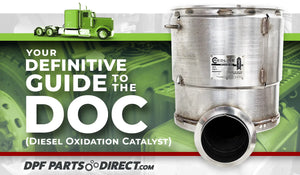
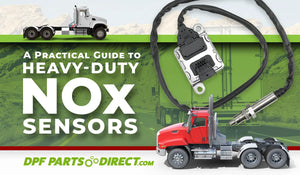

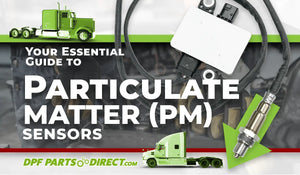
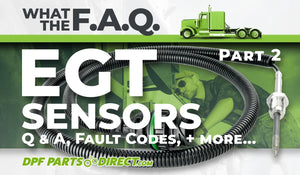
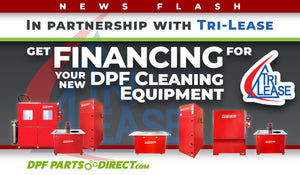

Comments 0